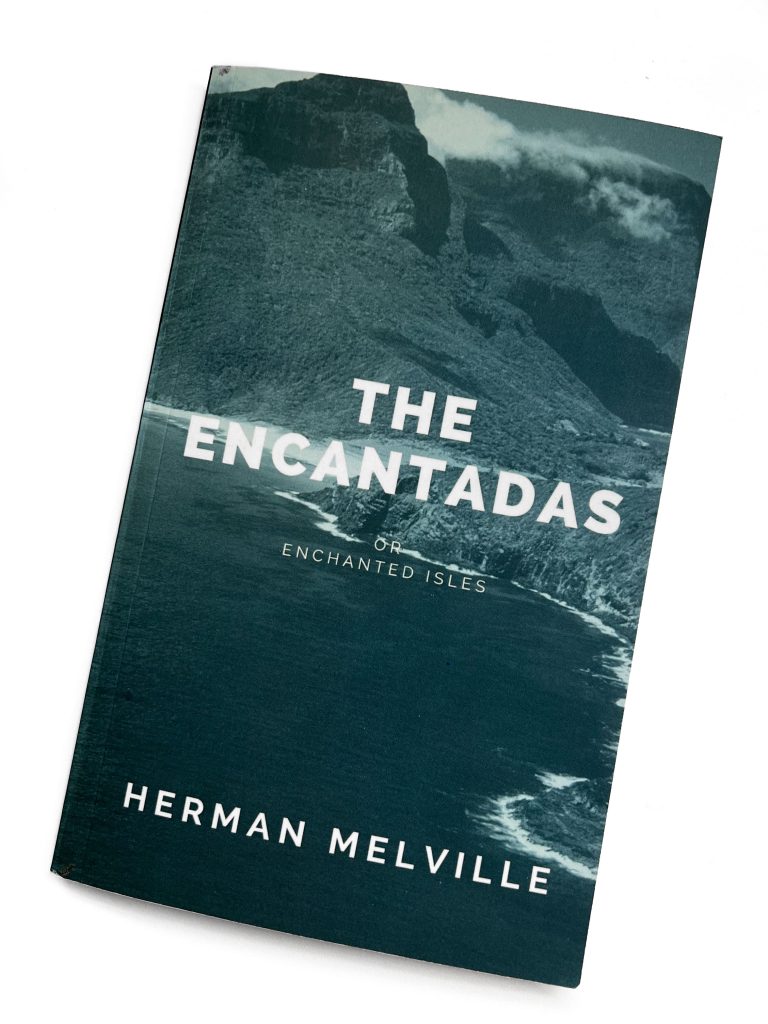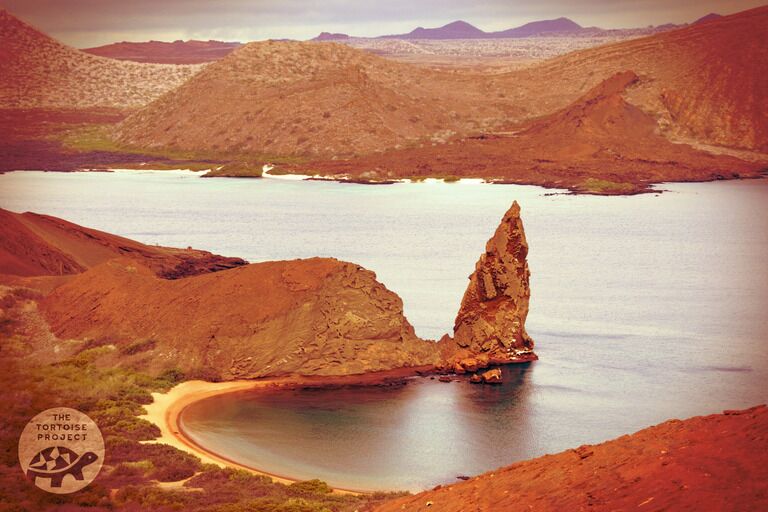Can anyone describe a tortoise better than Herman Melville? His impressions are poetic, rich, and dense:
“…these really wondrous tortoises… [were] black as widower’s weeds, heavy as chests of plate, with vast shells medallioned and orbed like shields, and dented and blistered like shields that have breasted a battle, shaggy, too, here and there, with dark green moss, and slimy with the spray of the sea
“They seemed newly crawled forth from beneath the foundations of the world.
“What other bodily being possesses such a citadel wherein to resist the assaults of Time?”
The tortoises of which he writes are none other than the famed inhabitants of the Galapagos Islands. Sailors and whalers called these islands the Encantadas, or “bewitched islands.”

Melville wrote “The Encantadas” in the aftermath of “Moby-Dick,” which had been published to a resounding thud. Although today the book regarded as his masterpiece, at the time it was a critical and commercial flop. Melville needed another hit. So he pivoted and returned to his earlier writing form, writing 10 sketches of the Galapagos Islands drawn from his exciting whaling experiences 15 years earlier, when the whaling ship he was working on spent several weeks there. This was 1841 — six years after Charles Darwin’s had passed through aboard the HMS Beagle.
The islands Melville describes bear none of the charms that visitors today see. To him, the Encantadas are possibly the last place on earth where humans belong. He sees the islands as uninhabitable. Desolate. Hostile. Anyone unfortunate enough to dwell there — whether by fate or choice — ends up much worse for the wear. His characters become enslaved, succumb to insanity, or die. The only humans who thrive are passers-through — whalers and buccaneers — to come to raid the islands for food supplies so they can continue their journeys.
The only life that thrives in Melville’s Encantadas are iguanas, birds, spiders, snakes and tortoises. On the remote rock-island Roca Redonda — off limits today — Melville describes a deafening layer cake of seabirds, surging with screeching and flapping life, at dawn. The sketch ends with a punch of energy: An ascent to the top, with ropes!
But I really read “The Encantadas” for the tortoises. Melville got his first up-close look at them on the main deck of his whaler, the Acushnet, when a hunting party of crew members returned from shore with a night haul of tortoises. Melville sees “antediluvian-looking tortoises… [that] seemed hardly of the seed of the earth.”
But what did whalers want with tortoises, anyway? Tortoises made good eating! Tortoises, built to survive the long haul, could keep alive in the ship’s hold for many months, even a year, until the crew wanted fresh meat. Melville’s original interest in them was thus culinary.

